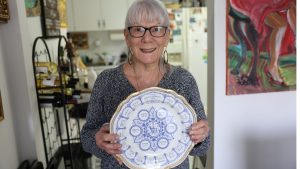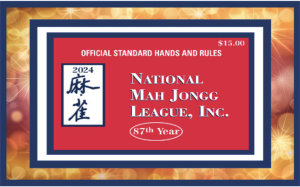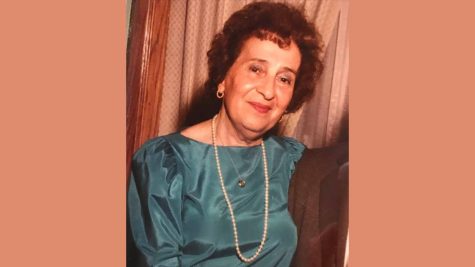Some Jews have an aversion to tattoos. This new trend might be the perfect alternative.
Published October 6, 2022
Every so often, I feel the urge to mark an event in my life with a change to my appearance: After my bat mitzvah, my best friend and I got second holes pierced in our ears; before I left for boarding school, I traded my long hair for a pixie cut; when I started graduate school, I opted for clear-framed glasses; and when President Biden was sworn in on January 20, 2021, I took the train to lower Manhattan to get third holes pierced in my ears. These moments have served different purposes, in turn helping me to regain agency over my body in situations otherwise outside my control and providing daily, tangible reminders of new chapters. But as someone with a relatively minimalistic sense of style — and whose Jewish parents have cautioned them against tattoos and facial piercings since birth — there have only been so many options for experimentation.
That changed last year when I started seeing the trend of so-called permanent jewelry popping up on my Instagram feed. And so, for my 28th birthday, I made an appointment at Brooklyn-founded jewelry store Catbird to get “zapped” and walked out with a delicate gold chain welded in an unbroken circle around my wrist. After 10 months of staring at my bracelet day in and day out, a routine surgery required a harried nurse to snip it off with a pair of office scissors. Two weeks later, I returned to Catbird, where it was promptly returned to its rightful place above my right hand. The ease of removal, and the fact that it left behind no trace, made me wonder if permanent jewelry could be a solution for anyone who is tattoo- or piercing-phobic, but is looking for the kind of rush that those body alterations provide — particularly those urged against tattoos or piercings for reasons connected to their Jewish identity.
So where does that Jewish anti-body modification bias come from? “I think everyone’s heard the urban legend that you can’t be buried in Jewish cemeteries with tattoos,” says Rabbi Rebecca Hornstein, citing a rumor I, too, grew up parroting to my friends. “It’s not true.” Yet Hornstein explains that there is a verse in Torah against making incisions in your skin that has come to be interpreted as a prohibition against tattoos. “There are a lot of earlier rabbinic texts that interpret the prohibition as being just about tattoos related to idolatry, and some that say it’s just writing the name of God that’s prohibited,” says Hornstein, who is the executive director of Boston Workers Circle, a secular Jewish social justice community. “As with everything in Judaism, there are a lot of voices throughout history interpreting things in different ways.”
The other reason so many Jews avoid tattoos is in reaction to the forced tattooing of the Holocaust. “That recent historical trauma gives the decision additional weight,” says Hornstein, adding that as the grandchild of Holocaust survivors, when she started getting tattoos, she kept her arms covered around the last living survivor in her family. “Eventually I forgot, and she never said anything about it. I think for her, it was like, young people are going to do whatever they’re going to do,” she says. The aversion to piercings, Hornstein adds, is more related to the idea of tzniut, or modesty. My own grandmother, who was born into a traditionally observant family in the early 1920s, didn’t have her ears pierced for this reason (though she was a fan of clip-on earrings).
But for Hornstein and others, making semi-permanent changes to one’s body fulfills a spiritual need and offers an opportunity to express one’s identities, Jewish or otherwise. Like me, she also sees it as a chance to commemorate a change: to memorialize a loved one or reclaim agency after an illness or bodily trauma. For college student Arielle Silvan, who recently got a welded bracelet with a friend as a symbol of their bond, jewelry plays a similar role. “I have a lot of sentimental jewelry,” she adds. “And I’ve treated each of my piercings, and the permanent bracelet, as moments of significance.”
Jewelry designer Sophie Ratner, whose company hosts permanent jewelry events, says that the customers who come in to get welded bracelets tend to be much more excited than other shoppers. “It’s something that feels unique. They’re not something you can walk into any jewelry store and get,” she says, adding that the laser equipment required to do the zapping (which connects two pieces of metal without heat, providing a safe and painless experience) can be prohibitively expensive. The lack of accessibility is part of why she believes it’s become so trendy. For her company’s events, Ratner collaborates with a Hasidic friend who works in New York’s Diamond District and owns his own laser welding machine. Ratner — who got a tattoo with her twin sister at age 24, but hasn’t come up with another design that holds as much meaning since — says tattoos and welded jewelry certainly require different levels of commitment. “It’s not like a tattoo, you don’t have to think about it that much,” she says. “I think the bracelets feels special because they stay with you, but it’s not forever.”
Growing up, my parents explained their aversion to tattoos and (some) piercings as being against the Jewish idea of preserving our bodies as unmarked and whole. Now, during the High Holidays, season marked by the symbol of circles, I glance down at my wrist and think that maybe welded bracelets can play into that wholeness. “There’s a lot in our tradition around circles, completeness — trying to create something whole,” adds Hornstein.
As cultural norms change around tattoos and piercings, it seems that future generations of Jewish children will likely grow up with different understandings about the relationship between Jewishness and permanent bodily changes. We may very well move away from, as Silvan puts it, “not wanting to do something to my appearance that my grandma would shrill at.”
Either way, making changes to one’s body can hold great meaning and significance. And the emergence of welded jewelry just adds another color to the palette of self-expression. “It’s about expressing an intangible thing in a super tangible way,” says Hornstein. “And that can be a really powerful experience.”




















